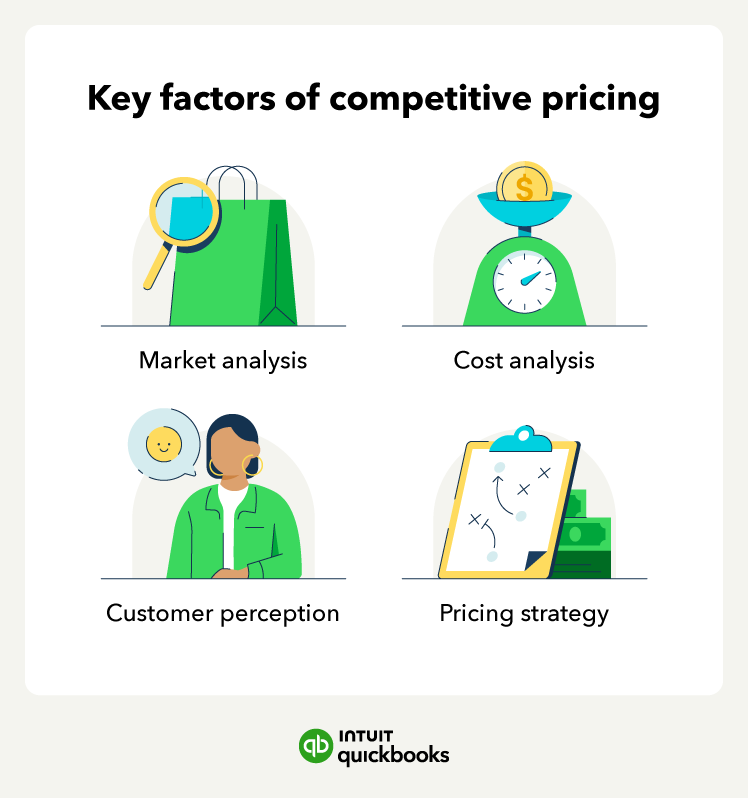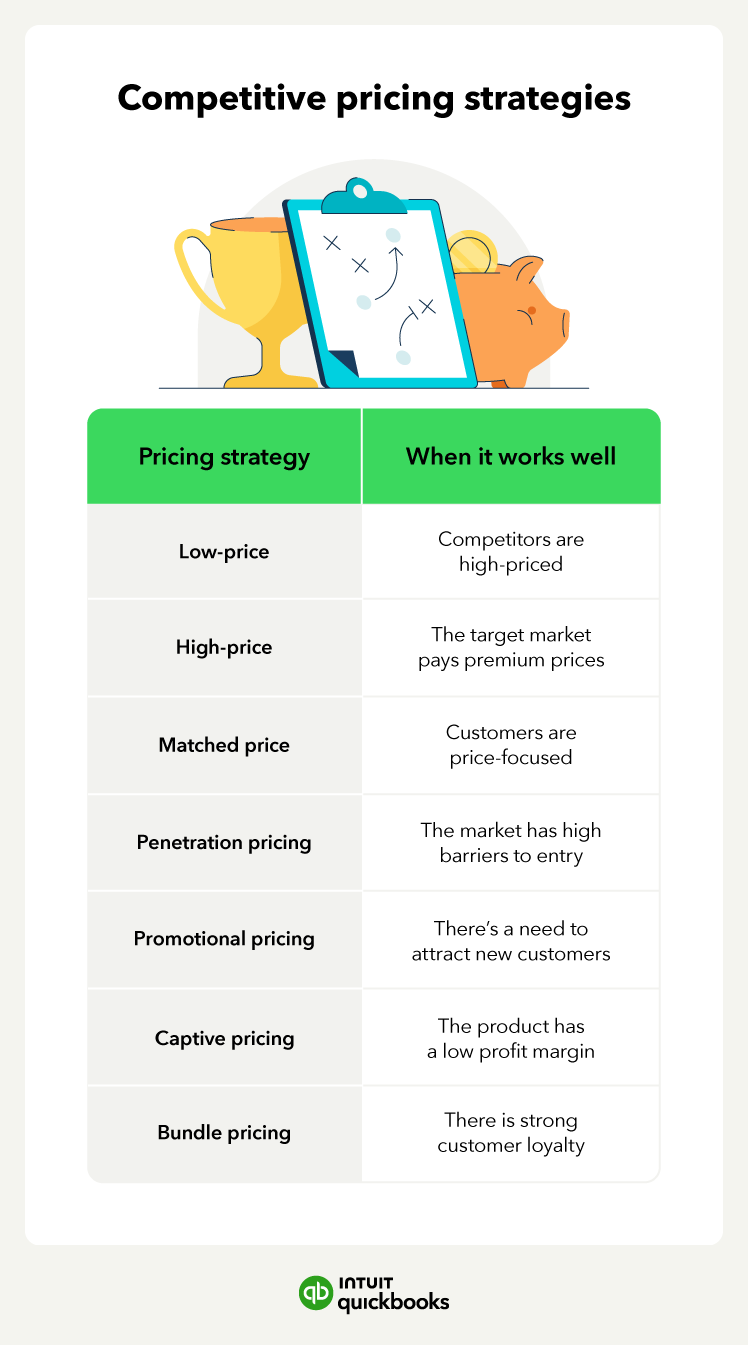Competitive pricing strategies
Just like no two businesses are alike, no two price competitiveness strategies are alike. Here are some competitive pricing strategy models that you can implement for your business:
Low-price
Low-price competing pricing consists of a company setting prices lower than competitors to win customers over and break into new markets. A common example of low-price competitive strategies is in retail, where giant discount stores are known to be cost-effective. And while they usually carry the same items as competitors, they are often priced lower.
High-price
Just the opposite of a low-price strategy, a high-price strategy is when a company sets its prices on goods and services higher than the market average. This, in turn, positions the brand and products as “luxury” or “superior,” driving market demand. You can see this pricing strategy with specialty food items, where high-end chocolates or organic produce is priced higher than competitors, usually do to higher quality.
Matched price
A somewhat middle ground between low and high-price strategies, the matched price strategy involves matching competitor pricing. This allows a company to avoid price wars and maintain its position in the market, allowing them to remain competitive.
Grocery stores often use this strategy, where their pricing fluctuates based on competitors' prices. Additionally, many stores have a “price match guarantee,” where you can purchase the item at their store at a lower price than a competitor.
Penetration pricing
Penetration pricing is where a business sets prices lower than competitors to gain market share, similar to a low-price strategy. After the business attracts customers, they will likely raise prices steadily to recoup any lost profits.
For example, streaming services initially set their prices at a low cost and have raised prices multiple times over the last few years, sometimes more than once a year.
Promotional pricing
When a company engages in promotional pricing, it temporarily reduces the price of a product (or products) to increase short-term sales. The company can use this strategy to attract new customers and clear out any excess inventory.
A well-known example of promotional pricing is seasonal sales, including Black Friday, Cyber Monday, and Prime Day.
Captive pricing
A psychological pricing strategy is captive pricing, where you sell one product at a low price but sell the complementary (or often necessary) products to use that product at a much higher premium price.
An example of captive pricing is a printer. Even low-end printers require customers to regularly buy ink at a premium price.
Bundle pricing
Bundle pricing is a relatively common competitive pricing practice where you sell multiple complementary products or services together at a discounted rate. If these products were to be bought individually, the price would ultimately be higher. This strategy encourages customers to purchase additional items since they get a deal and often become repeat customers.
You can find examples of bundle pricing at fast-food restaurants, where you can buy a sandwich, fries, and a drink together at a lower price than if you buy all items separately.

















